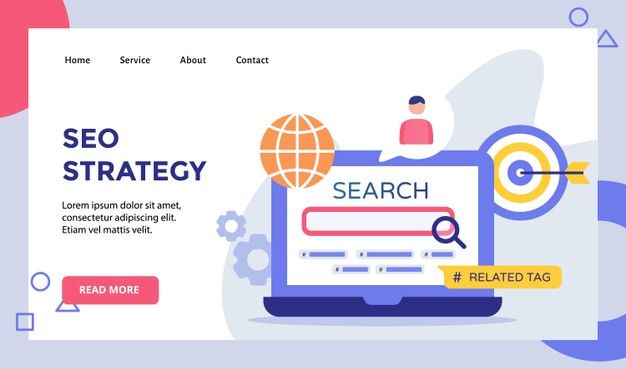
While social media can be a great way to reach and connect with new people, there are a number of negatives as well. While social media can cause trouble sleeping, it can also expose young people to new events, hobbies, and experiences that expand their worldview. Young people can also find support and encouragement on social media, especially during challenging life events. But, it's important to use social networks responsibly. These positives will help you get the most out your social media experience.
Positives
If you want to discover the positive aspects of social networks, you're at the right place. Social media has become a way to communicate easily and get updates quickly. It's helped people in many ways, from keeping them connected and up-to-date to teaching our children more effectively and providing entertainment. However, there are some drawbacks. Here are some examples. You can learn more about the benefits of social media for your family.
One of the best benefits of using social media is the ability to recall more vividly our past experiences. Cornell University research revealed that those whose memories were enhanced by social media used these tools to rate their experience intensity. Social media can make people happy which can lead to better memories. Positive aspects of social media can also be used to help deal with depression. This is because social media allows you to interact with other people and receive constructive feedback.

Cost-effectiveness
You can evaluate the advantages of social media in comparison to traditional marketing and advertising methods to determine its cost-effectiveness. Many social media outlets can be accessed free of charge. This allows firms to target specific audiences and send out advertising and promotions. It is generally the time taken to respond to customer comments, answer questions, and post information that costs social media engagement. This study was done in the U.S. only and is a useful start point for future research regarding the cost-effectiveness, and effectiveness of social media marketing.
There are many kinds of social media bidding strategies. Cost-per-click (or CPC) is the most common. Other bidding options available include cost-per impression (CPM), cost–per-click (CPP), as well as cost-per–action (CPA). CPC is the most preferred bidding strategy by most companies. But, established brands will often choose CPM to preserve their brand recognition and maintain their high-profile. Companies can partner with social media experts to maximize the return on social media advertising.
Reach
The Reach of your posts is a key metric to help you make an impression on social media. This is the number of unique people who view your posts. Facebook calculates this metric for each Post and Page separately. In the above example, Richard was reached by the video, which led to three impressions. Twitter reports Impressions, and not Reach.

If you want to analyze the reach of social media, it is important that you understand how these results are interpreted. There are various ways to measure this. Google Alerts is one option. By using these alerts, you can keep track of competitor brand mentions, industry-related keywords, and trends. This will allow you to monitor how your competitors' posts perform. Once you have a good idea of the influence that your posts have on your competitors' posts, you can then use these alerts for targeting those audiences.
FAQ
What is the cost of hiring a content strategist to create content?
Plenty of freelancers and agencies are available to provide content creation services at reasonable prices. However, some companies choose to pay more because they value the expertise of the person working on the project.
How does content-marketing work?
Content Marketing works because you produce valuable, engaging content that provides value.
When you provide helpful information, solve problems, entertain, or engage your audience, you build relationships with them. People will respond positively to positive messages from brands they trust.
People love reading about things they are interested in. Writing something interesting will make your readers return time and again.
Your content should drive people to take action - whether buying your product, signing up for your newsletter, visiting your website, or sharing your article via social media.
Content marketing should be engaging and informative.
Is a Content Marketing Strategy right for me?
If you already know what you want to say, then a Content Marketing Strategy will work perfectly for you.
These are just a few questions that you can ask yourself to help get you started.
Is it necessary for my business to communicate a specific message? Or am I looking to create content that resonates across a range of audiences?
Do you want to concentrate on generating leads?
What product am I trying to promote?
Am I interested in reaching people outside of my industry?
If you answered "yes", to any one of these questions, then a content marketing strategy is just what you want.
Statistics
- Progress indicators (0–100%) allow each team member to see how attainable each goal is and understand what remains to be accomplished. (semrush.com)
- To further show the importance of this, 89% of people have stopped doing business with a company because of a poor experience. (neilpatel.com)
- In fact, would pay more for a better customer experience, and 86% of B2B buyers would pay more. (neilpatel.com)
- Content marketing produces 3X more leads per dollar spent. Content marketing costs 62% less than traditional marketing. (criteo.com)
- This marketing strategy landed Ford a 15.4% conversion rate. (neilpatel.com)
- According to our research, 65% of companies with very successful content marketing in 2021 ran content audits at least twice a year. (semrush.com)
- According to our research, brand awareness, attracting traffic, and generating leads remain the key content marketing goals in 2022. (semrush.com)
- We found that 40% of businesses don't have a documented strategy yet. (semrush.com)
External Links
How To
How do you develop a content marketing strategy?
First, determine what type of content your clients want. Once you have established this, it is time for content creation. This could include creating an editorial calendar or planning where these pieces will come. Every piece of content must have a purpose. It doesn't matter what type of content it is, blog posts, social updates, or any other, they all must serve a single purpose.
Once you've decided on the type of content that you want to create, it's important to determine who your target audience is. What are their interests and what do they care about?
Next is to find ways of communicating with your target market. Although social media platforms can be a great way of connecting with people, there are many other options, including videos, podcasts, webinars and webinars.
After deciding how you will communicate with your market, the next step is figuring out what topics and types of content you want to cover. This goes back to the purpose of writing the content. What problem does this solve? Is it helpful? It will make their lives easier.
You now know what content you like to write. Now it's time for you to decide what you want. Is it possible to share information related to your industry? On current events? Are you focused on specific products or services The answer to that question determines your focus.
Once you have answered all of these questions, it is time to put everything together into one package.
You want to ensure that every piece of content you create serves its purpose. You don't want to waste anyone's time and energy, so you must build quality into every aspect of your content.
A great content marketing strategy is not complete without many moving parts.